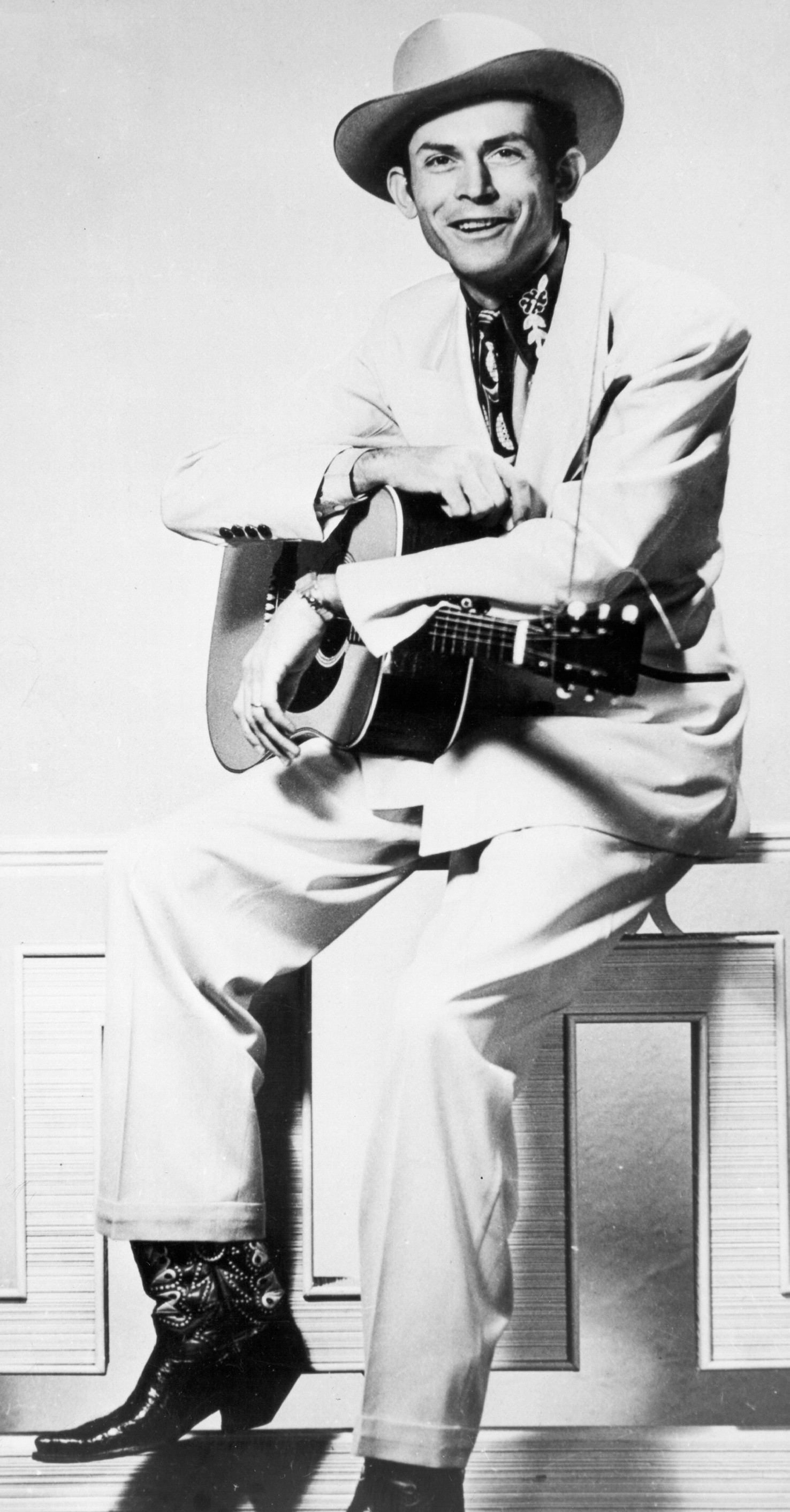The recent biopic “I Saw the Light” brought the tumultuous life of country music icon Hank Williams back into the spotlight, depicting his battles with alcoholism, infidelity, and the pressures of stardom. Hits like “Lovesick Blues” and “Why Don’t You Love Me” cemented his place as a leading figure in American music. Yet, the film notably omits a crucial and enigmatic chapter of his story: the circumstances surrounding his untimely death. Despite being just 29 years old, Hank Williams’ passing remains shrouded in mystery, sparking debate and speculation for decades.
On the evening of December 30, 1952, at his Alabama home, a restless Hank Williams reportedly told his new wife, Billie Jean, “I think I see God comin’ down the road,” hinting at a premonition of his own end. Within 48 hours, this premonition became a reality. While officially attributed to heart failure, the events leading up to and surrounding his death on January 1, 1953, are far from clear-cut, fueling one of music history’s most enduring mysteries.
“I think he had a profound sadness in him,” reflects Marc Abraham, the writer and director of “I Saw the Light.” This sentiment of impending doom, captured by actor Tom Hiddleston in the portrayal, seems to foreshadow the tragic events that unfolded. The generally accepted narrative begins with Williams embarking on a fateful journey to a New Year’s Eve performance.
The Premonition and the Final Journey: Setting the Scene for Tragedy
Hank Williams, plagued by chronic back pain, was under the care of a doctor who allegedly obtained his medical credentials through questionable means and was known for over-prescribing medication. Before setting off for a New Year’s Eve show in Charleston, West Virginia, this doctor administered a sedative to Williams. Accompanying him was Charles Carr, a college student hired as his driver. Inclement weather thwarted their plans to reach Charleston, leading to the cancellation of the concert and an unplanned stop at the Andrew Johnson Hotel in Knoxville, Tennessee.
In Knoxville, the narrative becomes increasingly hazy. Williams, who had already been drinking, received a shot of vitamin B12 and morphine from a hotel physician. As midnight approached, Carr prepared to drive Williams to a New Year’s Day concert in Canton, Ohio. Accounts depict Williams as visibly unwell – groggy and weak, reportedly requiring assistance from hotel porters to reach the car. Approximately six or seven hours later, on the morning of January 1, 1953, Carr discovered his passenger lifeless, his body already stiff with rigor mortis. The news of Hank Williams’ death reached the waiting audience at the Palace Theatre in Canton, where they poignantly sang his gospel-infused hit, “I Saw the Light,” in tribute.
Conflicting Accounts and Theories: The Knoxville Stop and the Hours Before Death
The immediate aftermath of Williams’ death was rife with suspicion. While the official cause of death was listed as heart failure, the coroner noted contusions on his body, suggesting a recent physical altercation. Charles Carr’s initial, nervous account of the final hours of their journey further fueled speculation of foul play. Adding to the intrigue, some witnesses, including a police officer, claimed to have seen a soldier present in the car, a detail not corroborated by Carr.
Several biographers, notably Colin Escott, whose book “I Saw the Light” served as the basis for the biopic, have proposed a startling theory: that Hank Williams may have already died at the Andrew Johnson Hotel in Knoxville. According to this hypothesis, Carr unknowingly drove for hundreds of miles with Williams’ deceased body. This theory was even hinted at in the original police report. Charles Carr, who passed away in 2013, remained largely silent about the events of that fateful journey throughout his life, adding to the mystery.
However, local Knoxville lore offers a contrasting perspective. Jack Neely, director of the Knoxville History Project, recounts a story from a Knoxvillian who claimed to be a doorman at the Andrew Johnson Hotel. This individual asserted that Hank Williams was conscious and even joking as he departed the hotel. Carr himself maintained that he briefly spoke with Williams in the car after leaving Knoxville, seemingly contradicting the theory of prior death.
Another local theory suggests that Williams received a second morphine injection at a Knoxville hospital, in addition to the one administered by the hotel doctor. This second dose, according to this account, may have inadvertently led to a fatal drug overdose.
Cause of Death: Heart Failure and Lingering Questions
Officially, Hank Williams’ cause of death was heart failure. However, the numerous conflicting accounts, unanswered questions, and the presence of unexplained injuries leave considerable room for doubt and alternative interpretations. Was it a drug overdose, exacerbated by a weakened heart? Did he die in Knoxville, unknowingly transported as a corpse? Or did he succumb to heart failure en route to Canton, as Carr’s account suggests? The lack of definitive answers continues to fuel debate and speculation among historians and fans alike.
Biopic’s Omission: Avoiding the Unresolvable Mystery
The inherent ambiguity surrounding Hank Williams’ final hours has led both “I Saw the Light” and the earlier 1964 biopic, “Your Cheatin’ Heart,” to deliberately avoid depicting his death. Director Marc Abraham explained his decision to omit the scene from “I Saw the Light,” stating, “I actually wrote 13 pages for that scene but took them out because they felt superfluous. To have a kid [Carr] turn around, feel his pulse and realize [Williams] was dead, it felt anticlimactic.”
Jack Neely aptly summarizes the challenge of portraying Williams’ death definitively: “No matter which account you pick, there are going to be people who say, ‘That’s not how it happened.’” The filmmakers’ choice to sidestep the event acknowledges the enduring mystery and the impossibility of presenting a single, universally accepted version of what transpired.
Legacy of Mystery: Why Hank Williams’ Death Still Captivates
The mystery surrounding how Hank Williams died is an inextricable part of his legend. It adds a layer of tragic romanticism to his already mythic persona as a tortured genius of country music. The conflicting accounts and unanswered questions ensure that the debate will likely continue, keeping his name and story alive for new generations of fans. While the precise circumstances of his death may forever remain unclear, the impact of Hank Williams’ life and music is undeniable, continuing to resonate deeply within the landscape of American culture.
In conclusion, while officially attributed to heart failure, the true answer to “How Did Hank Williams Die?” remains elusive. Conflicting testimonies, unanswered questions about his condition in Knoxville, and the omission of his final hours from biographical films all contribute to the enduring mystery surrounding the death of this country music legend. The lack of a definitive explanation only serves to further cement Hank Williams’ iconic status, ensuring his story continues to be told and retold.

